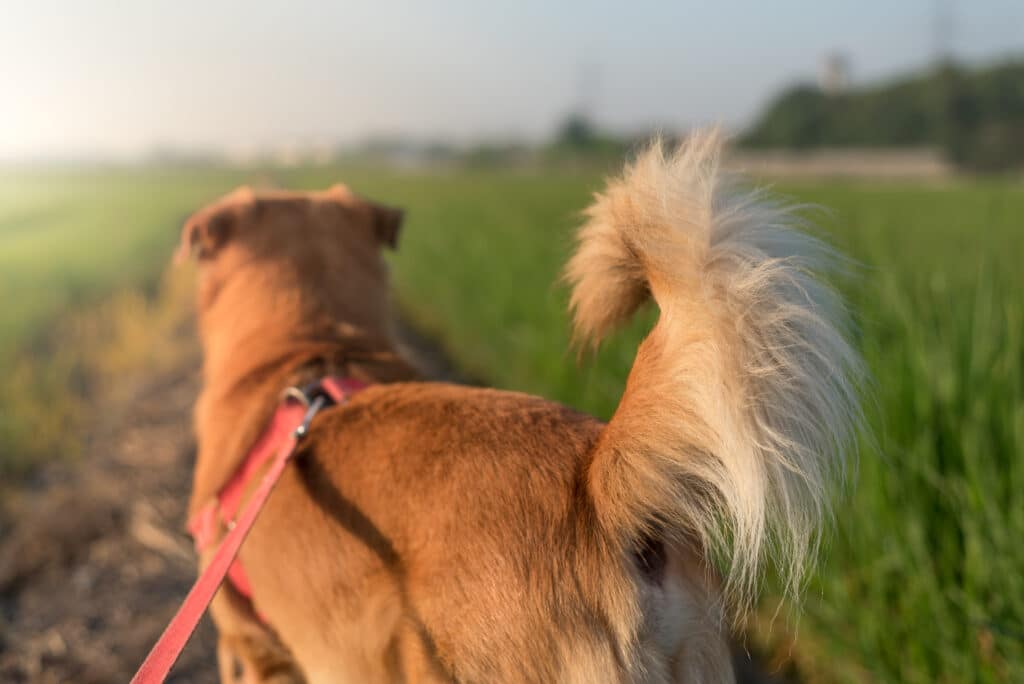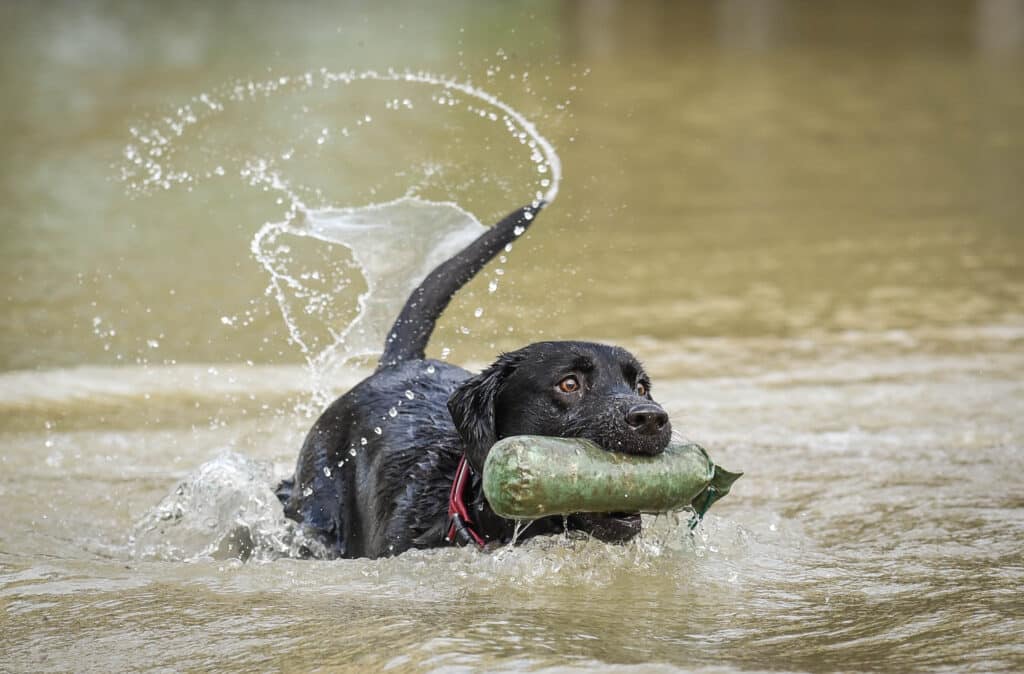“This post contains affiliate links, and I will be compensated if you make a purchase after clicking on my links.”
Hoomans believe that dogs wag their tails when they’re happy. However, a recently published study proves that their is more to the tail wagging than meets the eye.
The study, which was by a team of European researchers, studied and went through over 100 studies covering the topic of tail-wagging and what those wags mean.
Silvia Leonetti, one of the study’s authors and a research assistant in comparative bioacoustics at the Max Planck Institute for Psycholinguistics, told Newsweek, “Many animals have tails and use those tails for moving (e.g., an alligator swimming), balance (e.g., a cat walking along a narrow fence), and removing pests (e.g., a horse swatting flies away from its body).”
“But those examples contrast with domestic dogs, who seem to use their tails primarily for communication, rather than any other function,” she continued.

The authors also write, “One study found that during food denial situations, dogs wagged their tails more when a human was present versus not, suggesting that tail wagging may also function as a requesting signal.”
In an interview with Science, another one of the authors, Taylor Hersh of Oregon State University mentions two theories of the origin of tail-wagging in dogs.
She said, “One hypothesis is that tail-wagging behavior didn’t arise because humans directly selected it, but instead as a byproduct of selection for other traits.” She continued, “We were selecting dogs for docility and tameness, but these traits were genetically linked to the tail-wagging behavior.”
Their second hypothesis is that during the domestication process, humans (consciously or unconsciously) selected dogs that were wagging their tails, because we are “very much attracted to rhythmic stimuli”.
Hersh also calls tail wagging in dogs as an ‘asymmetric behavior’. They noticed that dogs that encounter positive situations wag their tails to the right side of their body. Meanwhile, dogs in negative situations wag their tails to the left side of their bodies.

When asked if tail wagging can tell us about a dog’s emotions, Hersh said the idea that tail wagging equates to a happy dog is not entirely true.
Hersh said, “One major takeaway that we saw in reviewing the research is that the links just aren’t as clear.”
She then mentioned a study where they looked at shelter dogs and tail wagging. Those that have been admitted as strays had their cortisol levels go down after being pet by a shelter volunteer.
Meanwhile, the dogs that have been surrendered by their owners to the shelter didn’t show the same drop in their cortisol levels, even after being pet.
However, in both cases, Hersh said, “the dogs were wagging their tails more when they were being pet, but their stress levels changed differently depending on their life history.”
She continued, “I would say at this point that it’s a pretty open question.”
While the study provided more insight on dogs and tail wagging, there are still many questions left unanswered.
Andrea Ravignani, an evolutionary cognitive scientist at the Sapienza University of Rome and the study’s senior author, tells Science that there’s still a lot of aspects of tail wagging that they’d like to study.
“We still don’t know exactly which parts of the dog brain control which features of the tail wagging. Is tail wagging for dogs similar to breathing that we can partly control? Or is it similar to blushing? Do rhythmic areas in dog brains activate?”
She tells Newsweek, “It’s a whole world of possibilities to explore and understand.”


















